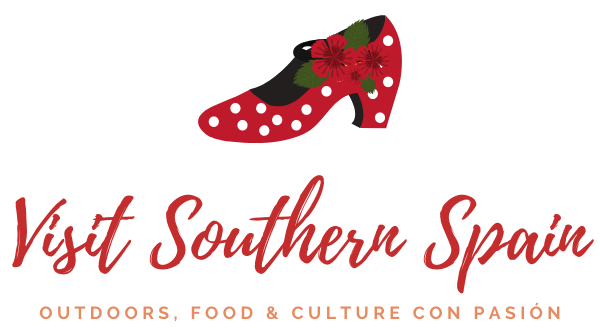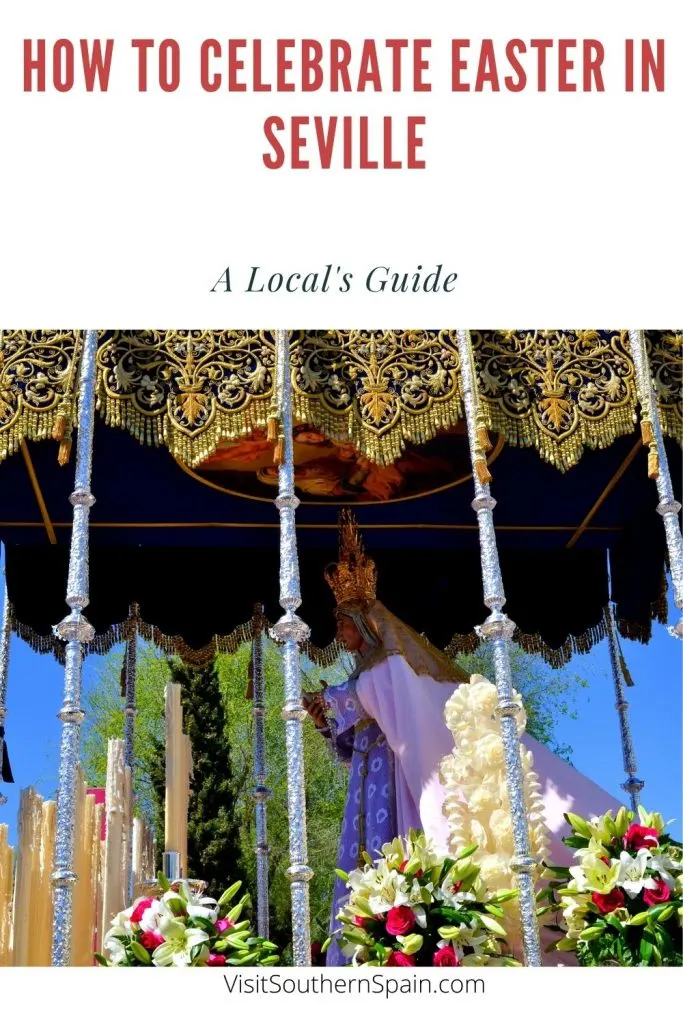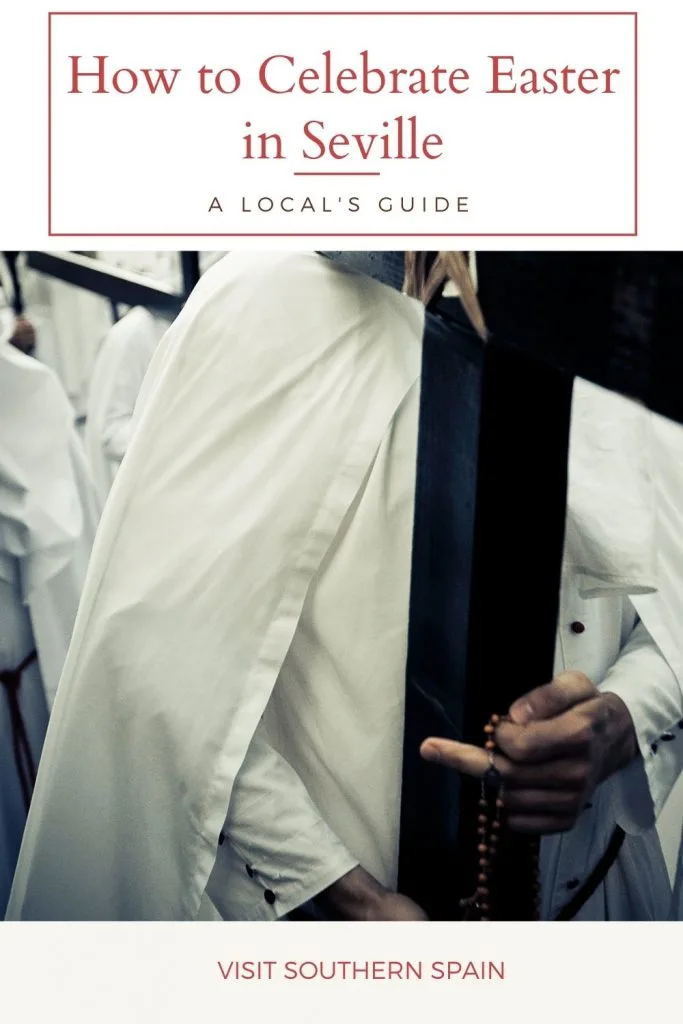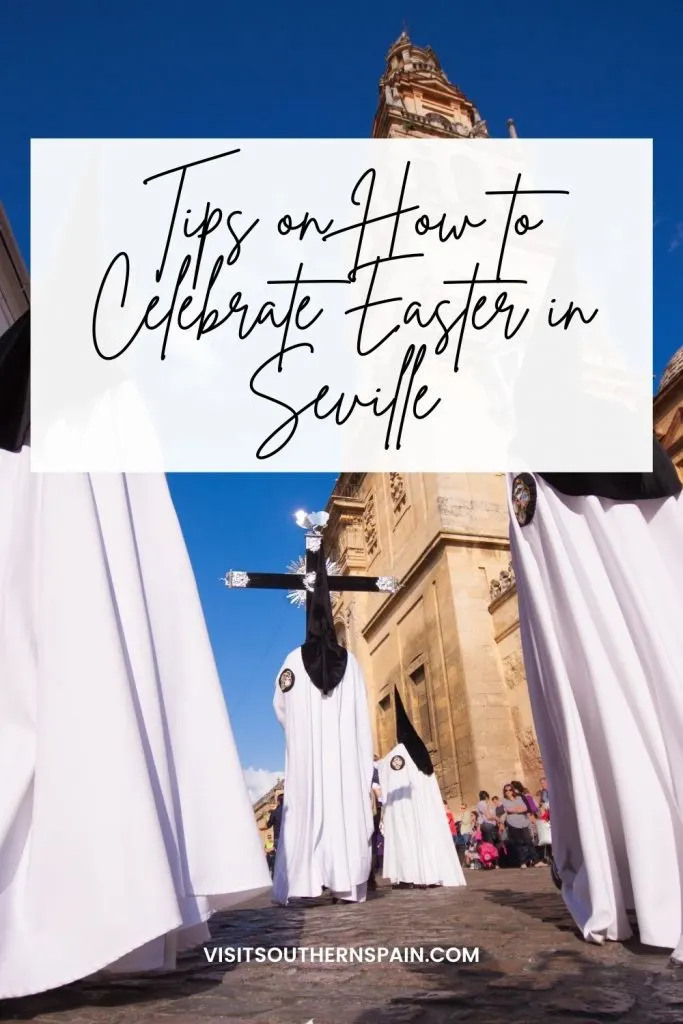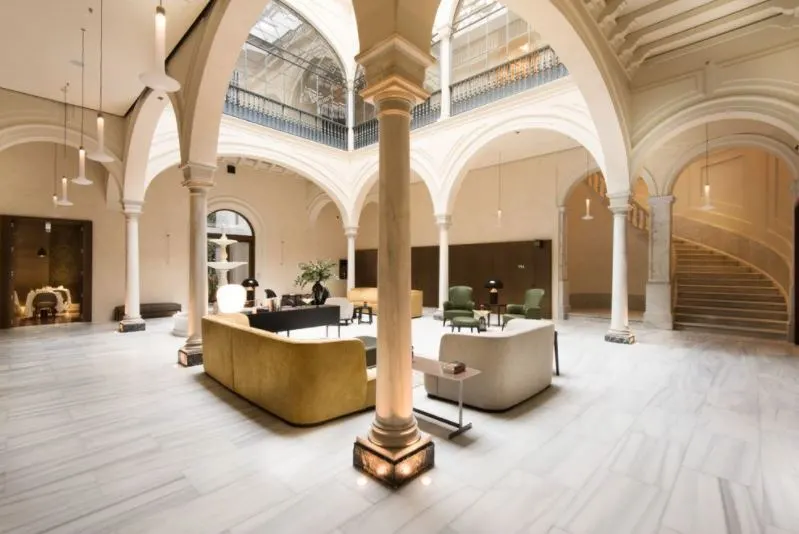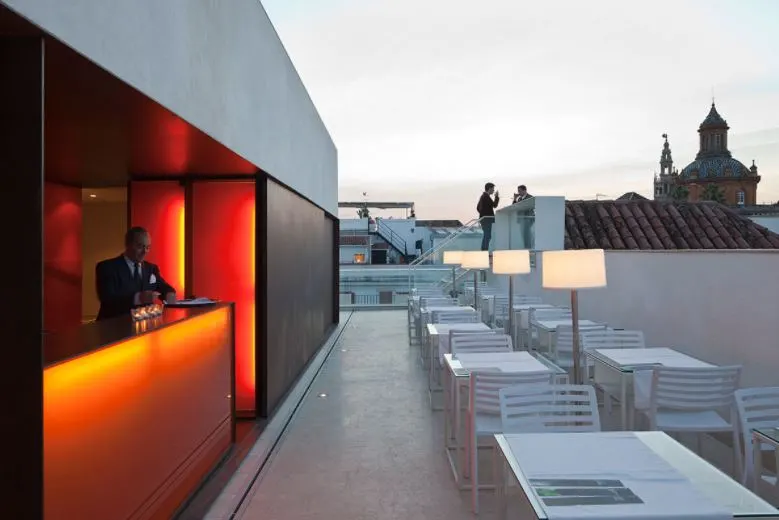A local guide on how to celebrate Easter in Seville.
Holy Week, or Semana Santa as it is called in Spain, is the most sacred week in the church’s calendar.
Easter in Seville is a spectacular yet somber occasion when Catholics celebrate Christ’s triumphal entry into Jerusalem and his subsequent death and descent into Hades.
Second, only the famous April Fair Holy Week celebrations in Seville are far from the chocolate bunnies and Easter egg hunts that you are used to at home.
Let’s check out this amazing celebration and some of the best things to do in Seville!
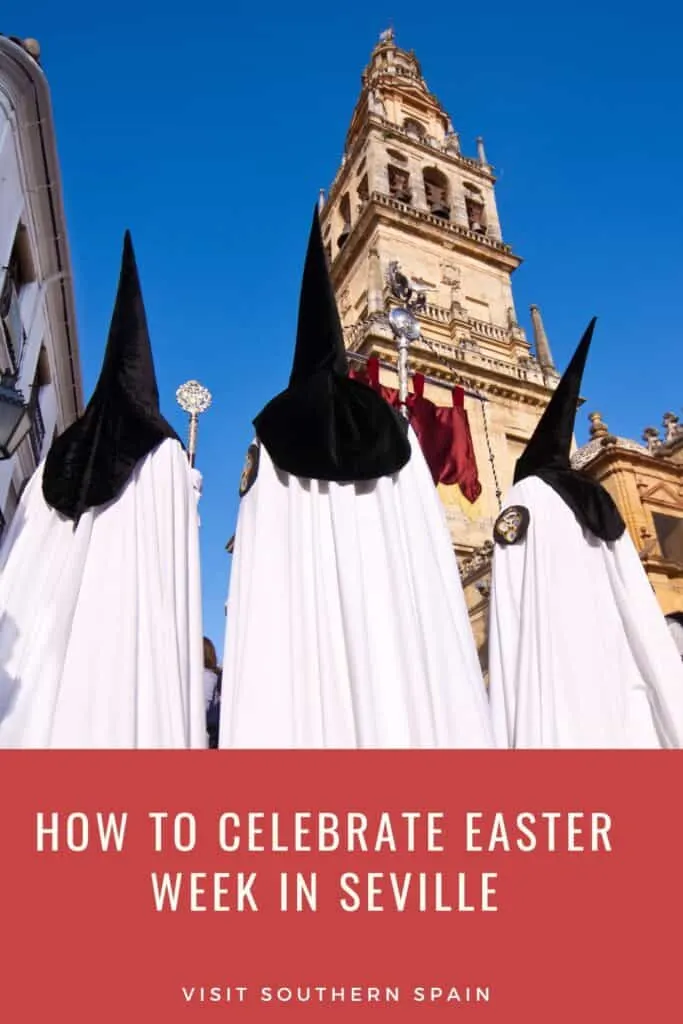
You, dear reader, support this blog. If you purchase through a link, we earn a small commission. As an Amazon Affiliate, we earn from qualifying purchases.
Pssst…??!! You can’t get enough Seville? Have a look at my other posts:
Overview of Easter in Seville
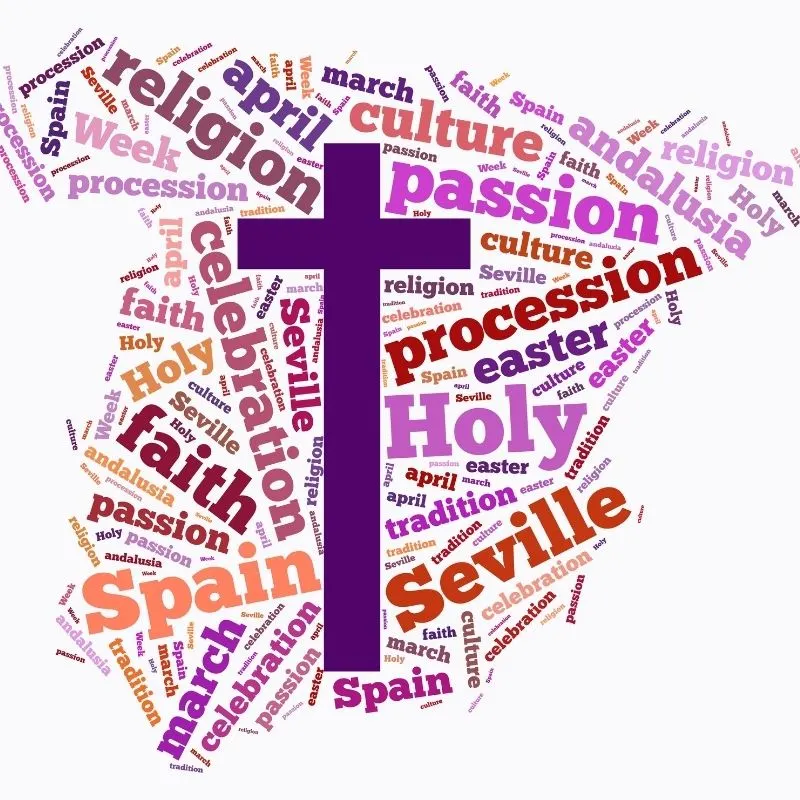
Since the 16th century, confradias or church brotherhoods have carried highly ornate statues of Christ and the Virgin Mary from their neighborhood church to the Cathedral and back.
Often weighing hundreds of pounds, the figures depict scenes from the Passion of Christ and are accompanied by brass bands playing somber music.
After the long winter nights and cold weather, springtime and easter in Seville are a welcome reprieve to all the time spent indoors.
Warmer weather arrives, and flowers start to poke their stems out of the earth as they are brought back to life.
Because the vernal equinox dictates it, the time of year when the subsolar point crosses the equator into the Northern Hemisphere.
Easter in Seville and in general is never celebrated on the same day and takes place on the Sunday following the first full moon after the spring equinox.
So how is Semana Santa celebrated in Spain and of course, Seville?
How is Semana Santa Celebrated in Seville
The Processions
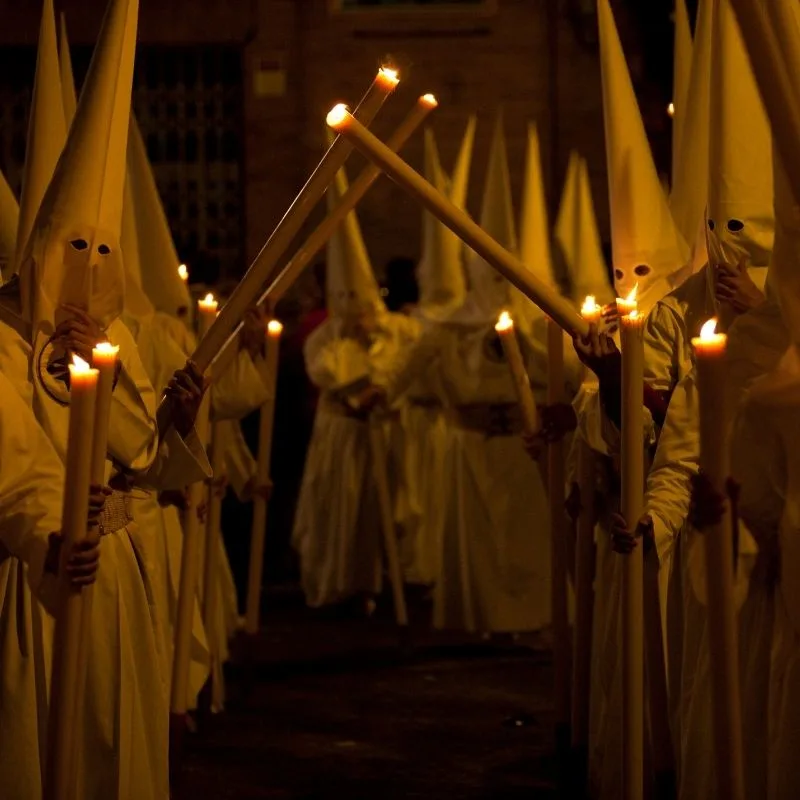
To those unfamiliar with Spanish Easter traditions, it might seem shocking to see men and women wearing hooded cloaks similar to the Klu Klux Klan.
With slits cut where the eyes are, the pointed hoods are designed to protect the identity of sinners as they repent for their misdeeds.
Called “Nazarenes” because they follow the teachings of Jesus, these repentant sinners walk in front of the elaborate floats behind a giant cross as they make their way from the church to the Cathedral.
Accompanied by bands, the processions make their way through the narrow, winding streets of the old town from early morning until late at night.
Seville easter procession is magnificent to watch at night as they make their way guided by candlelight.
Depending upon the brotherhood, the number of people in the procession can range from 300 to over 3,000.
The procession can also last many hours, depending on how far the church is from the Cathedral.
The Paso
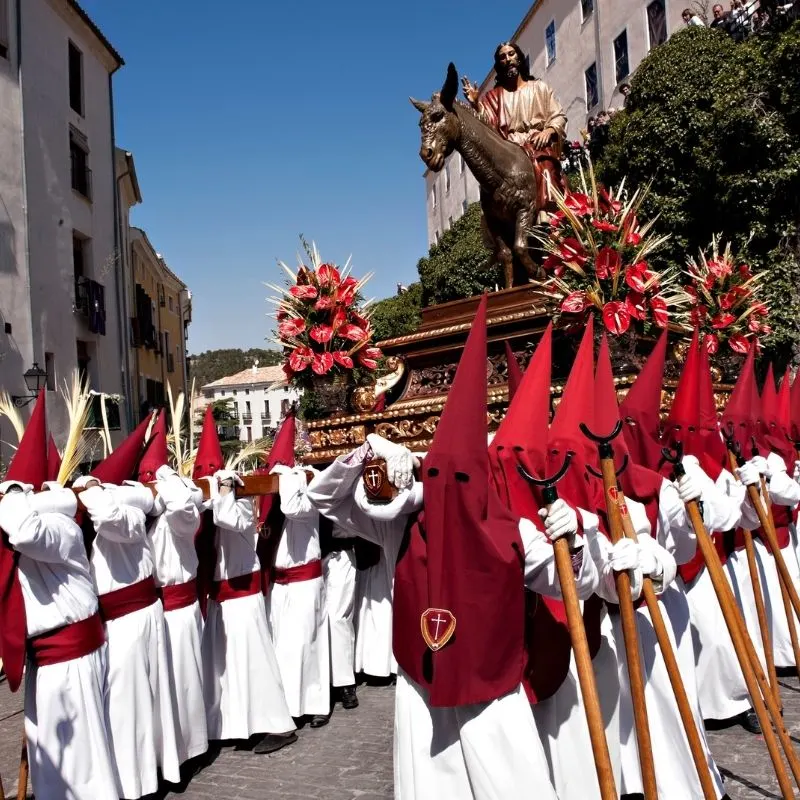
The Paso is a lifesize or larger sculpture that depicts a scene from the Passion of Christ which you will see in Easter in Seville.
Ornately carved and adorned with gold, the pasos are carried on the shoulders and necks of a team of men hidden beneath a curtain.
Called “costaleros” (sack men), the pasos appear as if they are floating on air despite the fact they weigh hundreds of pounds.
Depending on weight, a Paso requires between twenty-four and fifty-four costaleros.
Some of the pasos used for Easter in Sevilla date back to the 16th century and are highly prized.
The Official Route
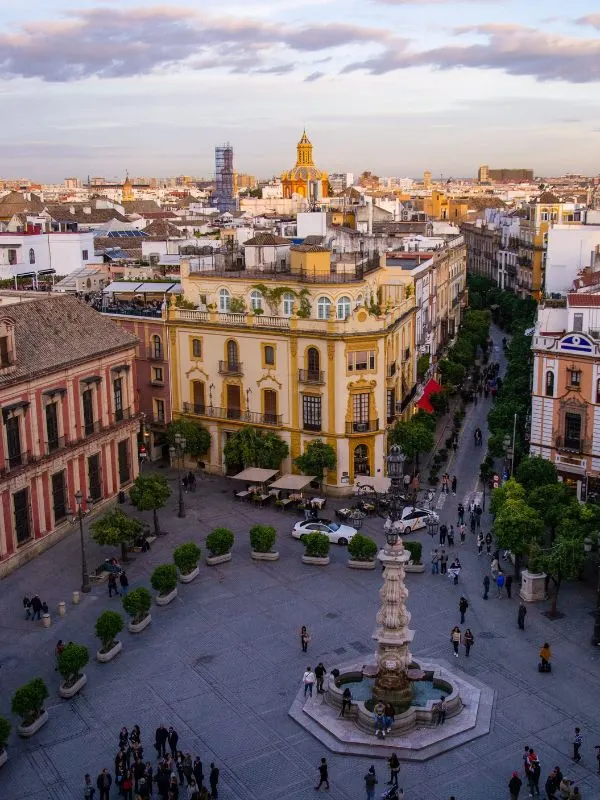
The processions start from the brotherhood’s neighborhood church and follow a mapped-out route to the Cathedral that includes a particular area for viewing.
The best places to witness Seville in easter are on Calle Sierpes, Plaza San Francisco, and Avenida de la Constitució.
Seville easter parades are really interesting to watch, so you should not miss it!
AIRE DE SEVILLA PerfumeVintage Sevilla T-ShirtRick Steves Sevilla, Granada & AndaluciaAndalusia: Recipes from Seville and BeyondTop 10 Andalucía and the Costa del Sol (Pocket Travel Guide)Spanish Flag T-Shirt
The Days of Holy Week
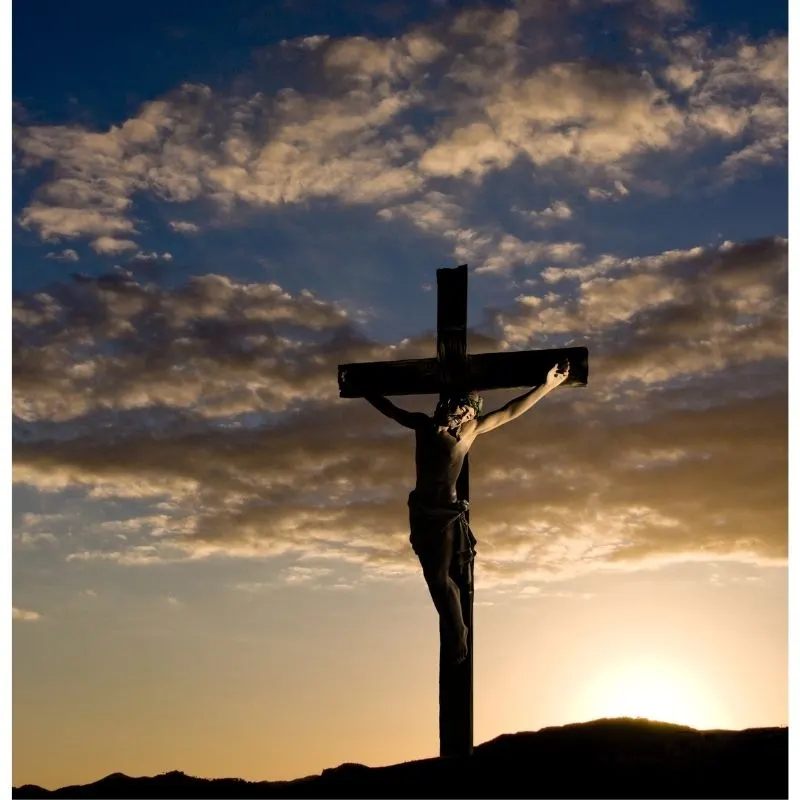
- Friday of Pains: Always on the Friday before Palm Sunday, the Friday of Pains or the Friday of Sorrows as it is also called, is a solemn remembrance of the Blessed Virgin Mary.
- Saturday of Passion: Held on the last Saturday during Lent, Pasion Saturday is held on the eve of Palm Sunday and the beginning of the Semana Santa in Seville.
- Palm Sunday: Always occurring Sunday before Easter, Palm Sunday commemorates Jesus’s triumphant arrival in Jerusalem. Marking the first day of Holy Week, Palm Sunday is celebrated by the blessing and distributing palm branches. The gospels say that people in the crowd scattered palm branches in front of Jesus as he rode into Jerusalem. In Spain, processions are held on the morning of Palm Sunday, with people walking through the streets carrying palm branches.
- Monday of Holy Week: Celebrated a week before Easter, Holy Monday is the day Jesus cursed the fig tree, cleansed the temple, and answered the questions of his authority.
- Tuesday of Holy Week: Two days before his betrayal on Holy Thursday, Jesus told his disciples to prepare for what would happen to him in the coming days.
- The Wednesday of Holy Week: Spy Wednesday or Good Wednesday in Western Christianity, commemorates the day Judas Iscariot made a bargain with the Jewish chief priests to betray Jesus.
- Holy Thursday: Maundy Thursday is the day during Holy Week that celebrates the washing of the feet and Jesus sitting with his apostles for the Last Supper.
- Good Friday – La madrugá: Also known as Holy Friday, or Great Friday, Good Friday commemorates the crucifixion of Jesus and his death and his death outside the walls of Jerusalem. Known as La Madruga in Spain, it is the most important and spectacular moment of Semana Santa Seville. Early in the morning, crowds gather at the Cathedral to commemorate the events that led to Jesus dying on the cross, and it is the night when some of the most revered statues make their way through the streets.
- Holy Saturday: Catholics Begin the celebration of the Easter Vigil service on Holy Saturday as a transition to Eastertide. The day commemorates the Harrowing of Hell between Jesus dying and being resurrected
- Easter Sunday: Easter Sunday in Seville is one of the most festive days of the Christain calendar. The day celebrates the third day after the crucifixion of Jesus and his ascension into heaven. In Spain, families gather for a big meal of seafood and sometimes Sopa de Ajo, garlic soup with an egg.
The Music
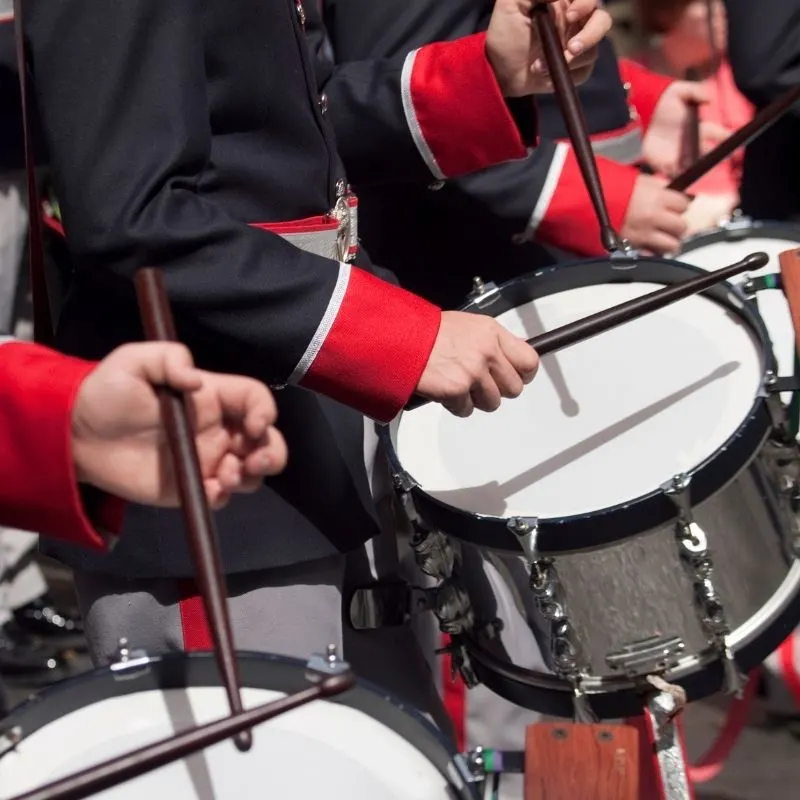
While a few processions for Easter in Seville are done in silence, most of them have some musical accompaniment.
The majority feature a brass ensemble that plays hymns or songs associated with marching bands during the Seville easter parade.
The bands following behind the image of Christ tend to play sorrowful songs, while the ones following behind the Virgin Mary are more joyful.
Along the procession’s route, it is not unusual for onlookers to sing flamenco songs known as saetas (arrows).
When the procession leaves its home church, the band always plays the Spanish national anthem.
La Mantilla
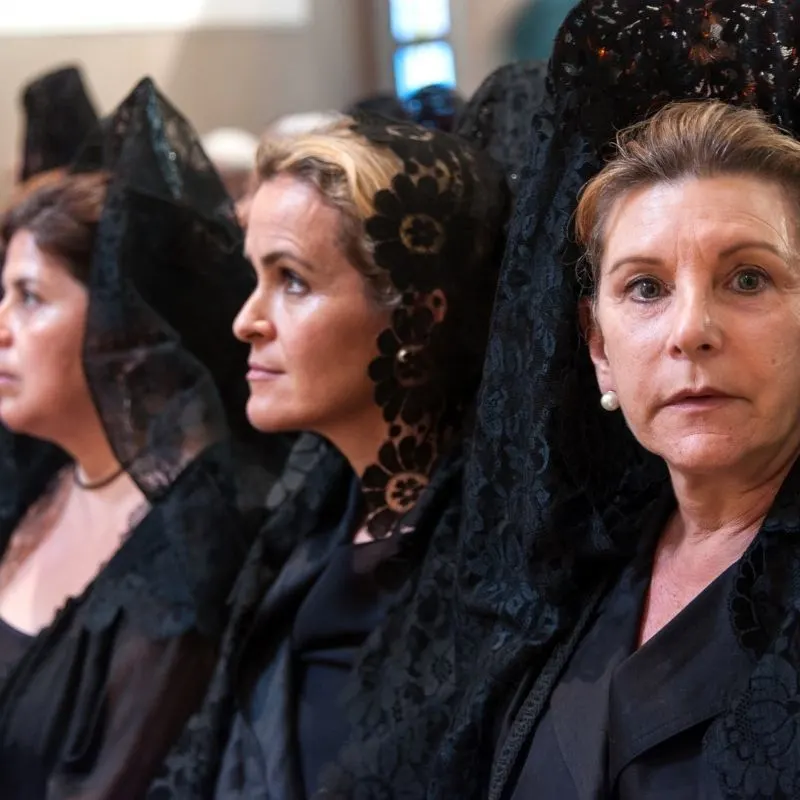
Traditionally worn by women on Easter Seville on a Thursday and sometimes Good Friday, La Mantilla is a lace or silk veil worn over the head and shoulders.
Women often use a sizeable tortoiseshell-colored comb called a peineta so that veil sits above the head.
Religious Services
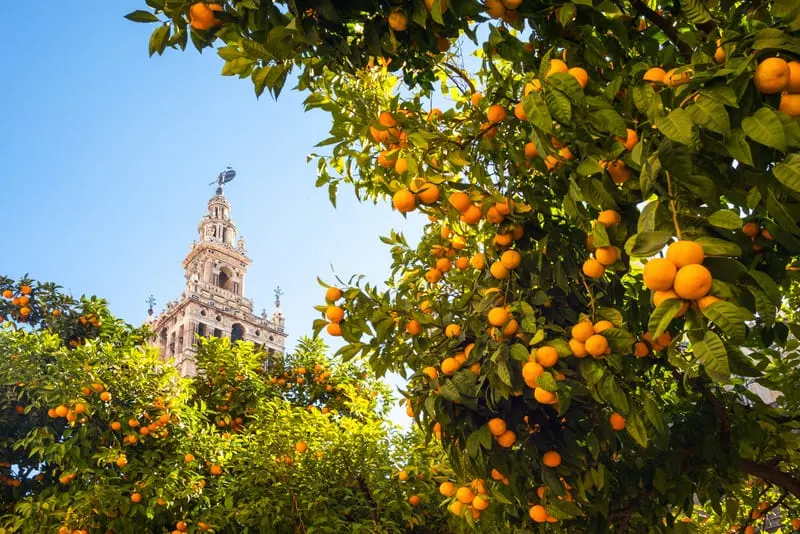
The city’s churches and cathedrals host a series of solemn Masses, prayers, and processions commemorating Jesus Christ’s Passion, Death, and Resurrection.
Throughout the Seville easter weekend, devout worshippers and visitors alike gather to attend these services.
These religious services during Easter in Seville provide a sacred space for reflection, meditation, and spiritual renewal to connect deeply with Easter’s solemnity and significance.
Festive Gatherings
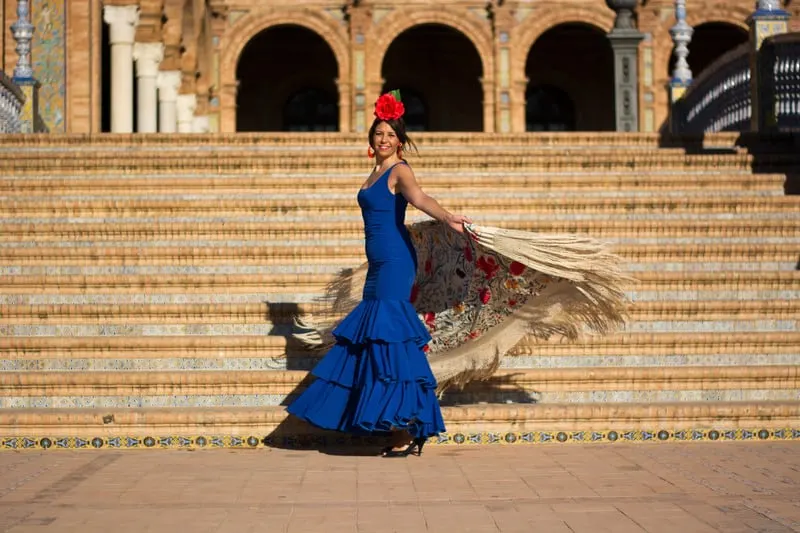
During Seville easter celebrations, joining festive gatherings adds another dimension to the Easter experience.
These gatherings, often held in bustling plazas and public spaces, infuse the city with an infectious energy and spirit of celebration.
Visitors and locals come together to partake in a variety of community events, from lively music performances echoing through the streets to captivating dance presentations.
Culinary demonstrations offer a chance to savor the rich flavors of local cuisine, enhancing the sensory tapestry of the festivities.
These gatherings serve as a hub of cultural exchange and camaraderie, where people can come together to revel in the joyous atmosphere of Easter weekend in Seville.
Easter Food
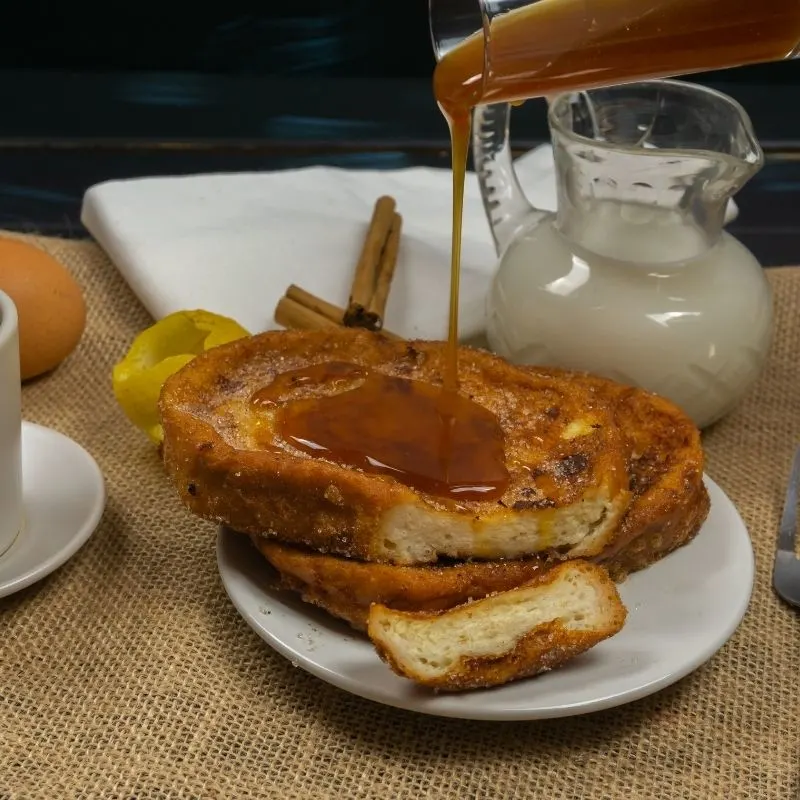
Like all festivals and traditions in Spain, Easter in Seville has its own special foods.
This is especially so during Holy Week, as Catholics are not supposed to eat meat-making fish dishes, the king of Easter foods.
If you are dining out at Easter in Seville, nearly all bars and restaurants will make either fish or vegetables the main dish in their menu del dia.
In Andalucia, Potaje de Vigilia, an easy dish made with chickpeas, spinach, and cod is served during Lent or Holy Week.
Holy Week in Seville is an excellent time to try traditional Spanish Easter treats like torrijas and bartolillos.
A symbol of spring and the Holy Week celebrations, most devotees do not eat meat and instead resort to fish and vegetable dishes and the following sweets:
- Torrijas: With recipes dating back to the 1600s, Torrijas are similar to French toast and coated with sugar and honey. Get the recipe for Torrijas here.
- Bartolillos: Believed to have been brought to Spain by the Romans, Bartolillos are made from sweet dough filled with pastry cream and deep-fried.
- Roscos de Semana Santa: These are ring-shaped Easter donuts made from a sweet dough flavored with anise or orange zest. They are often enjoyed as a morning or afternoon snack during Easter week.
- Pestiños: Another beloved Seville during easter sweet, pestiños are small pastries made from flour, olive oil, and wine, which are deep-fried until crispy. After frying, they are coated in a syrup made from honey, sugar, and sesame seeds, giving them a deliciously sweet and crunchy texture.
Easter Crafts

Get creative and make your own Easter-themed crafts, such as decorating eggs (huevos de Pascua) or crafting traditional Spanish Easter candles (velas de Pascua).
You can find craft supplies at local shops or markets.
Helpful Tips for Celebrating Easter in Seville
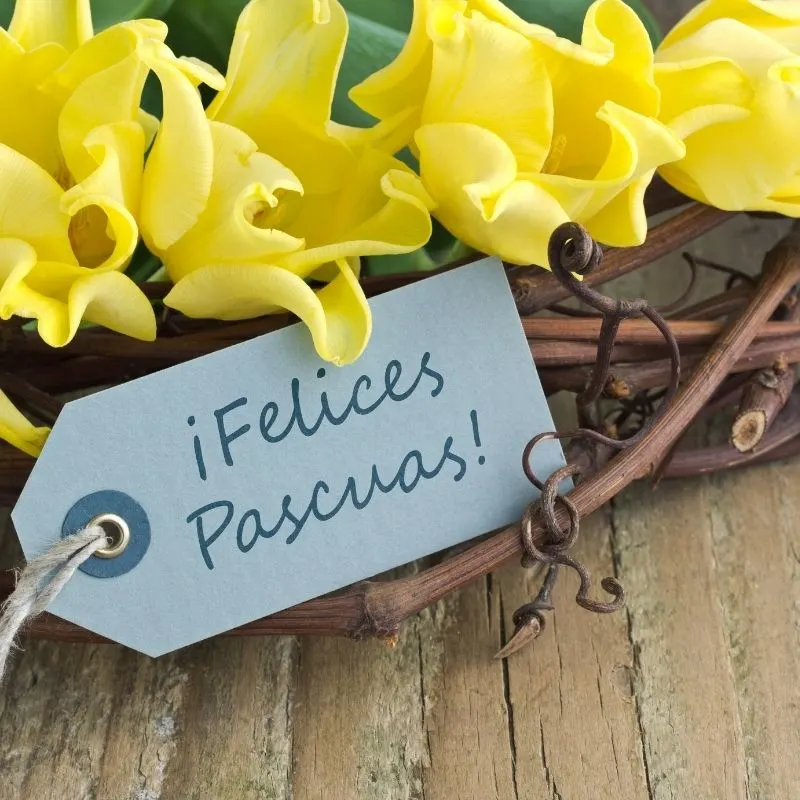
After the Seville April Fair, Easter week in Seville is one of the busiest times of the year, with the city full of locals and tourists who have come to see the processions.
Semana Santa is part of the best festivals in Andalucia and one of the most beloved and Seville is one of the most famous cities where is Semana Santa Celebrated in Spain.
Semana Santa is a holy week, and as such, you should respect it and the devoted people who participate in the activities.
Also, visiting Seville during Semana Santa can be great for kids, as this is one of the best things to do in Seville with kids.
As a guide, the darker the color of the robes, the more solemn the procession is. Check here how to celebrate Semana Santa in other cities in Andalucia.
Each procession has its schedule and itinerary and is repeated in the same way year after year. Here are a few tips to help you enjoy Easter in Seville:
- Book a hotel or Airbnb away from the center of the city. Some of the processions last until dawn, which means you might not be able to get a good night’s sleep because of the noise. – Check out the best Airbnbs in Seville here.
- Get a city map and download the Guía Semana Santa de Sevilla app from the Google Play Store. The app is easy to use and is an excellent tool for finding out what is happening.
- Pick out an excellent location to watch the processions and get there early. Avoid intersections and the area around the Carrera Oficial, and never cut in front of someone.
- Santa Semana in Seville attracts enormous crowds, and with everyone in close contact with each other, pickpockets are out and about, so be aware.
Seville City MapVintage Spanish FanSpanish Flamenco CastanetsAire de Sevilla Cologne 150 mlSevilla T-shirtSeville and Andalucia Travel Guide
Top Things To Do In Seville
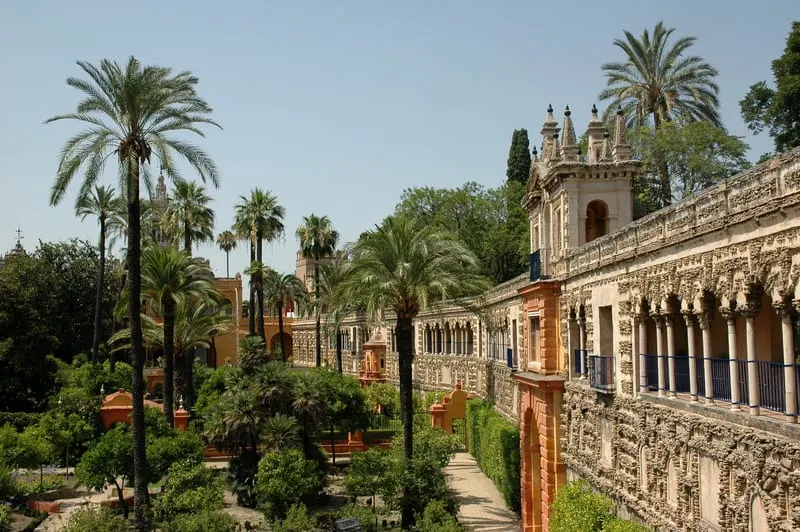
Besides all the Santa Semana Sevilla processions, there are plenty of other things to do in Seville such as:
- Seville Cathedral: Built between 1434 and 1517 on the city’s main mosque following the Reconquista, Seville’s Gothic Cathedral is impressive. The Cathedral is also the resting place of Italian explorer Christopher Colombus. – Get your guided tour here.
- Visit the Real Alcazar Palace: Originally constructed as a fort in the 10th century by the Caliphate of Cordoba, the Real Alcazar Palace is a breathtaking spectacle. With its ornate Moorish architecture and lush gardens, the Real Alcazar Palace was used as the setting for the Kingdom of Dorne in HBO’s hit series Game of Thrones. – Check the guided tour here.
- Walk to Plaza de España: Commissioned to celebrate the 1929 Ibero-American Exposition, the Plaza de España is an Art Deco wonder with peacocks and ponds.
- Watch the sunset from Metropol Parasol: Regarded as being the world’s largest wooden structure, the Metropol Parasol offers some of the best views in the city.
- Visit the Archeological Museum of Seville: Housed in a former palace at the end of the Parque de María Luisa, Seville’s Museo Arqueológico is home to a treasure trove of artifacts dating back thousands of years.
- La Giralda Tower: Incorporating what was once a minaret on the city’s mosque, the Giralda Tower is the bell tower of the Seville cathedral. – Get your guided tour here.
Accommodation in Seville
With Seville being the capital of Andalucia and a popular place with tourists and people visiting for business, there are plenty of places to stay in some of the best neighborhoods in Seville.
Shared rooms are available in hostels for people on a tight budget, while for those for whom money is no object Seville has plenty of luxury accommodation.
Below are our top three picks to suit most budgets:
Mercer Sevilla*****
Designed for people looking to have a luxury experience in an exclusive setting, this 5-star boutique hotel has only five rooms and suites.
Housed in an elegant late 19th-century mansion, the hotel is located in the historical center next to the iconic Real Maestranza bullring.
The El Arenal neighborhood where the Mercer Sevilla is located is considered the city’s most cosmopolitan area.
Preserving an atmosphere of its glorious past, the El Arenal favorite spot of Spanish writers Cervantes, Quevedo, and Lope de Vega.
Facilities at the Mercer Sevilla:
- 24-hour front desk
- Restaurant
- Bar
- Garden
- Sun terrace
- Outdoor swimming pool
- Free WiFi throughout the hotel
- Parking available nearby for 35€ per day
Hotel Alfonso X****
Located in the Santa Cruz neighborhood, next to the Cathedral and the Giralda, The 4-star Hotel Rey Alfonso X is an elegant hotel in a 19th-century building.
All the rooms in the hotel have been meticulously decored to blend tradition with timeless elegance.
Rated highly by guests for its location and views of the city, the Hotel Rey Alfonso X is a quiet oasis in one of Seville’s busiest areas.
Facilities at the Hotel Rey Alfonso X:
- 24-hour reception
- Restaurant
- Bar
- Free WiFi
- Tea and Coffee maker
- Sun Terrace
- Rooftop swimming pool
- Secure on-site parking
Check Hotel Rey Alfonso’s offer here
Catalonia Hispalis Hotel***
Located 1.2 miles from the city center near the airport, the 3-star Catalonia Hispalis Hotel offers guests modern, air-conditioned, clean rooms with TV and free WiFi.
Across from the hotel is a bus stop from which guests can travel to the historic center. Nearby is the El Corte Inglés shopping mall, which features a variety of shops and restaurants.
The hotel offers a buffet breakfast and has an outdoor swimming pool and sun loungers.
Facilities at the Catalonia Hispalis Hotel:
- Restaurant
- Bar
- Satellite TV
- Swimming pool
- Sun terrace
- Free WiFi
- On-site parking
Check out prices & photos here
Short FAQ about How to Celebrate Easter in Seville
Is Semana Santa happy or sad?
Seen as a victory over sin and death, the six days leading up to Easter that make up Holy Week is a tragic and joyful period in Christian culture.
Therefore Santa Semana in Spain has both happy and sad elements.
Is Semana Santa the same as Easter?
Starting on Palm Sunday and Lasting until Easter Sunday, Santa Semana is concluded by Easter.
Semana Santa is translated as The Holy Week which celebrates the death and resurrection of Jesus.
Is Seville religious?
Despite its elaborate Santa Semana processions and rituals the week leading up to Easter in Seville, there is a lack of outward religious expression by individuals in Seville.
While most Sevillanos regard themselves as Catholic, religion is not seen as a significant aspect of everyday life and is especially true amongst young people.
What is Easter Week in Seville?
Easter Week in Seville is a renowned annual religious event featuring elaborate processions, vibrant celebrations, and intricate floats honoring the Passion of Christ.
What are Seville Easter activities?
Things to do when visiting Seville at Easter include attending solemn processions, viewing ornate floats depicting religious scenes, participating in religious ceremonies and rituals, enjoying traditional food and music, and experiencing the vibrant cultural atmosphere of the city during this significant religious festival.
What is the Holy Week in Seville like?
Holy Week in Seville is a deeply traditional and culturally rich event characterized by elaborate processions featuring ornate floats depicting religious scenes, solemn ceremonies, intense devotion, vibrant street decorations, traditional music, and a profound sense of community as locals and visitors gather to observe and participate in this significant religious festival.
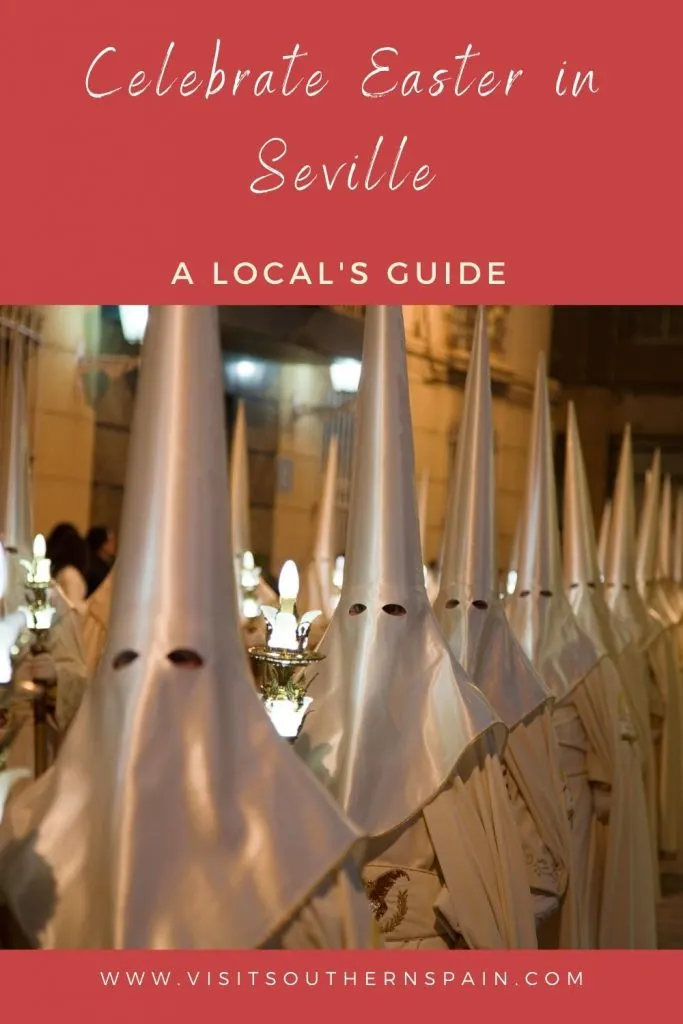
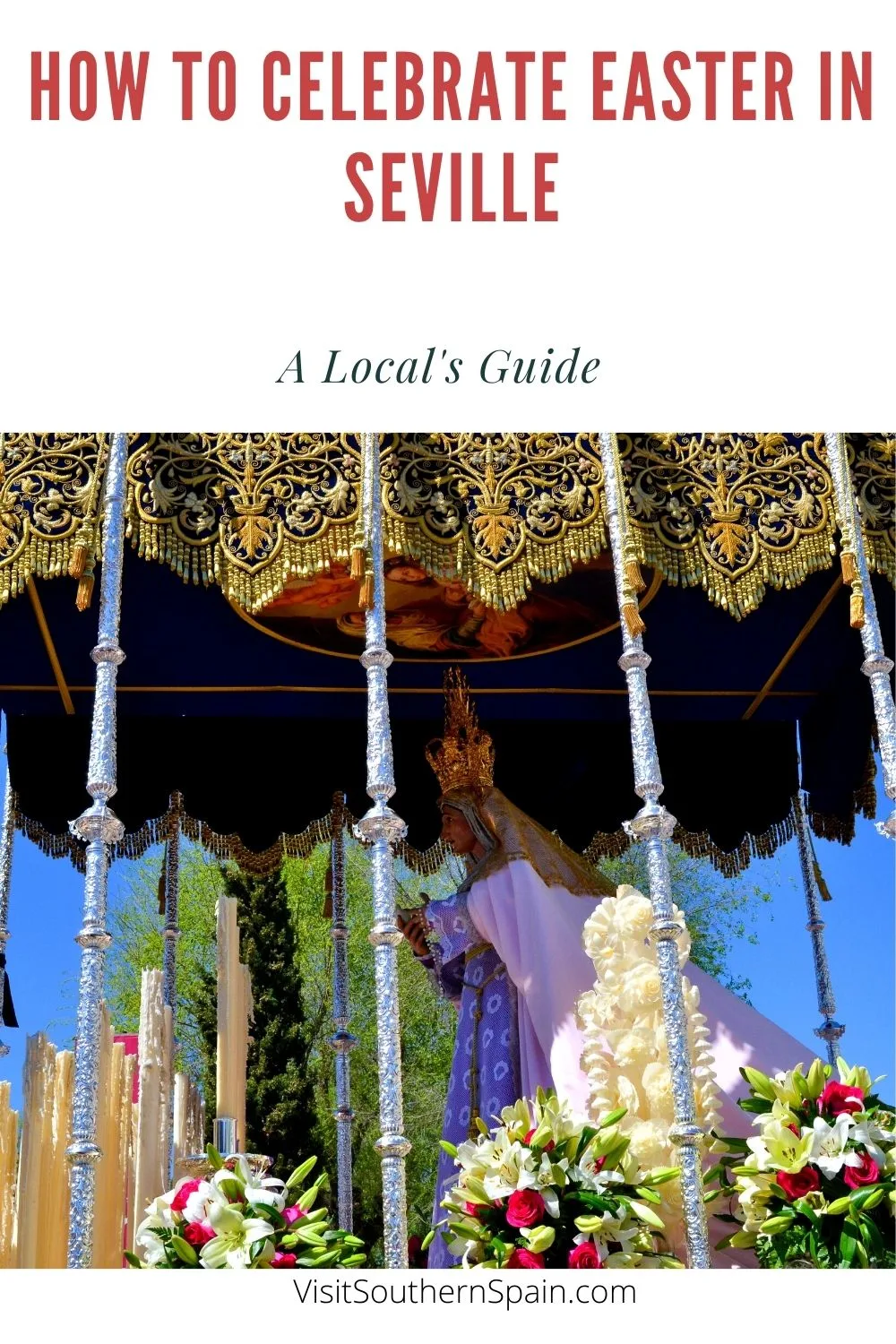
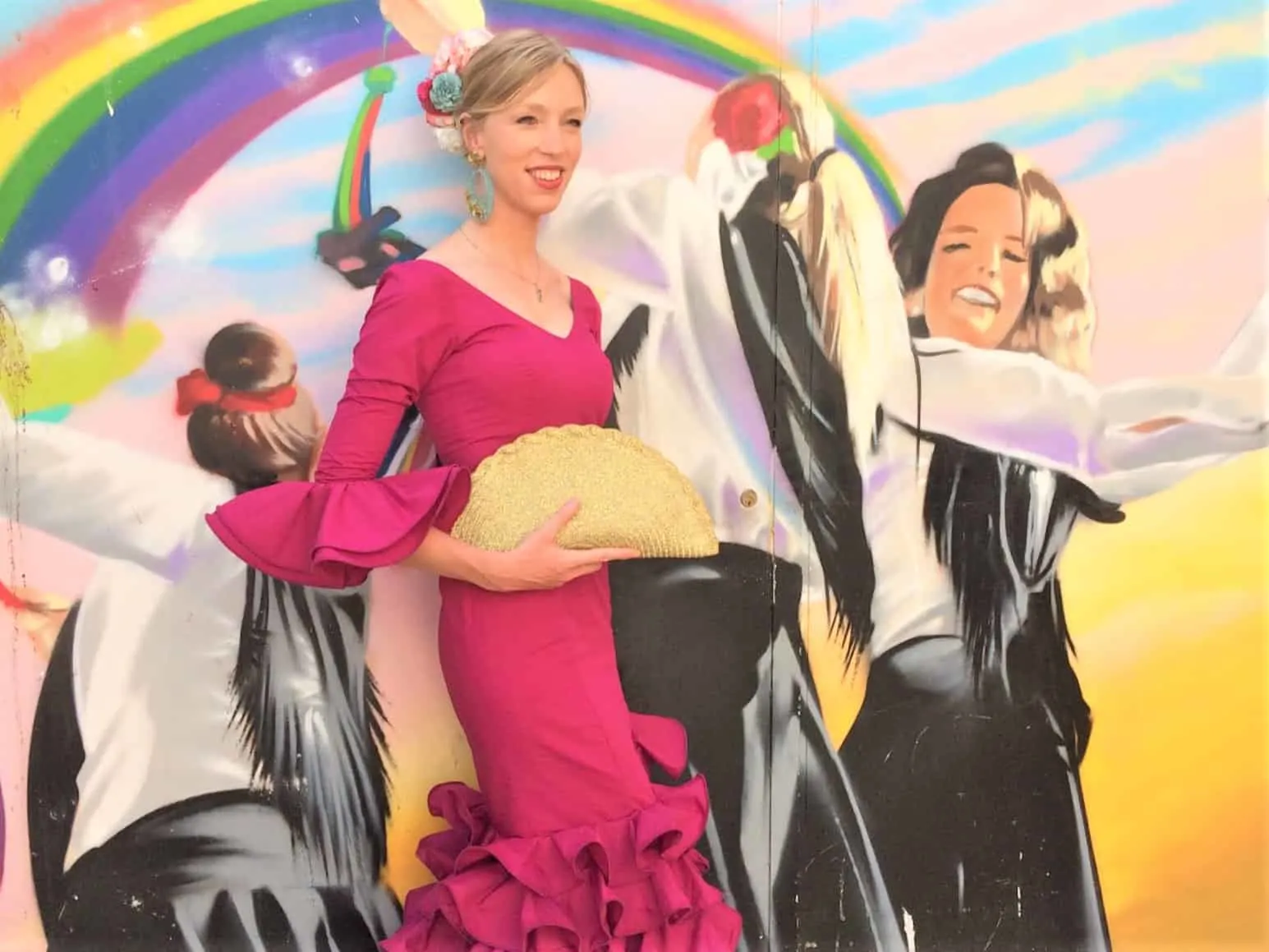
Hola, I’m Paulina! Together with my team, we are passionate about Southern Spain. Here we share all you need to know for great times in Southern Spain with the best places to visit, stay and, of course, the best food to eat.
Let’s dive in and explore Southern Spain’s outdoors, food and culture con pasión!
